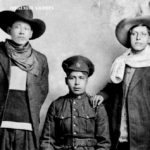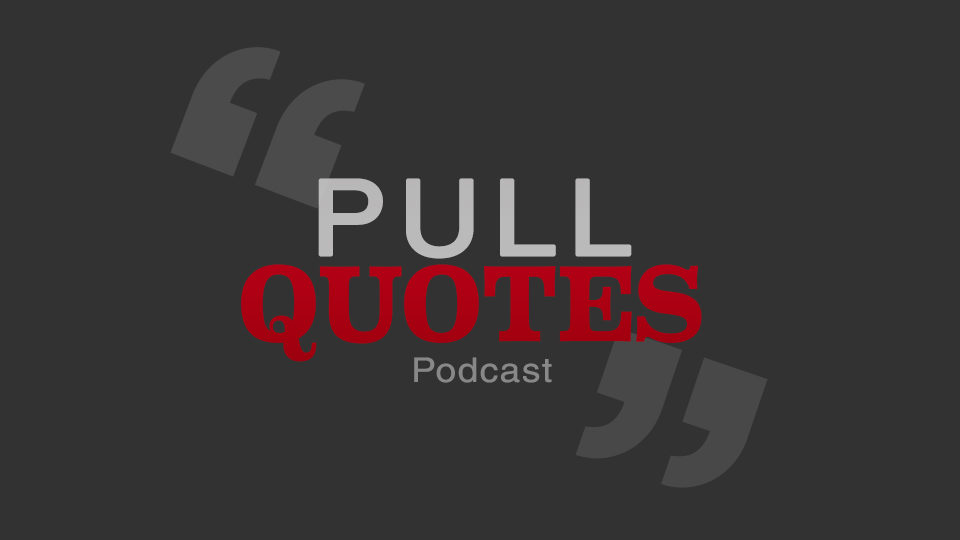Every November, TV reporters don poppies and newscasts host Remembrance Day specials. Major world war battles are recounted, and we hear repeated phrases like “fought for our freedom.” But what stories don’t we remember? And what role should journalists play in passing on national narratives?
Podcast guests:
Ted Barris, journalist and author of several books on Canada’s military history, including Victory at Vimy: Canada Comes of Age
Jamie Swift, a journalist and co-author of The Vimy Trap: Or, How We Learned to Stop Worrying and Love the Great War with historian Ian McKay.
Kathy Grant discusses representation of Black soldiers.
[rev_slider_vc alias=”podcast-episode-5-clip-1″]Kenneth Jacobs, a veteran who joined the army in 1943, speaks about his experience and attitudes towards Canada (Veterans Affairs Canada).
R.H. Thomson talks about the 'framing' of Remembrance
[rev_slider_vc alias=”podcast-ep-5-clip-2″]
"Mike Foxhead, a cowboy from the Siksika (Blackfoot) First Nation of Alberta, was one of over 4,000 Aboriginal Canadian volunteers of the Great War." -- The World Remembers, A Passport of First World War Canadians
For more than a decade, historian Kathy Grant has been working to bring attention to the stories of Black Canadians who served during wartime. She’s carrying on the work of her father, a Black World War Two veteran who was determined to honour the contributions of unrecognized Black veterans.
For Grant, it’s important that people see themselves represented in war history and remembrance.
“It’s when kids go to school and they’re learning about service every year and they don’t see images of themselves and they’re told oh you didn’t serve, or weren’t allowed…it has an effect,” said Grant.
“We were a part of history. It was not ideal, but we were there…we were willing to put our lives on the line…We were able to do that too.”
Grant interviewed several Black veterans for videos on the Veterans Affairs Canada website, and has collected hundreds of pictures of Black soldiers through her Facebook page, Black Canadian Veterans Stories of War.
Grant says she’s glad to see more media attention around Black contributions to the Canadian war effort in recent years–and hopes that trend continues.
“Broadening” remembrance
Historically, discussions of war remembrance have often omitted stories of marginalized people. Indigenous Canadians, for instance, have a long history serving in Canada’s military. Many, however, returned home only “to have their children consigned to residential schools and to find that they could not vote yet in Canada,” said journalist and author Jamie Swift.
The current rituals and language around “remembrance” were created in the 1920s during an Anglo-centric period when the Great War was framed by the victors as a heroic event, said actor R.H. Thomson. A such, many communities do not feel included around Remembrance Day.
“Does it have meaning for the Chinese community? Does it have meaning for the South Asian community? Does it have meaning for the Vietnamese community? Mostly these answers are no,” Thomson said. “Therein lies the beginning of all those who were excluded because we’ve kept the ceremony based on that early model.”
Thomson wants to broaden the concept of remembrance to acknowledge individuals. He’s producing a multimedia project called The World Remembers during the WW1 centennial, whereby the name of each person who died is being projected at a precise time in public places around the world. People will see the names of all war dead–regardless of their nationality or what army they fought in.
“What about the South Asian Canadian, what about the Sikh Canadian, what about the Italian Canadian, Slovenian Canadian, Vietnamese Canadian? Shouldn’t they be involved by seeing their family’s name appear at the same time?” said Thomson.
Questioning the narratives

The discourse around Remembrance Day can follow a certain script in Canada, says Swift; it often repeats a patriotic story
of valour, sacrifice and soldiers “fighting for freedom.”
But Swift says journalists need to remember that history and commemoration are “contested terrain.”
“There’s nothing more compelling in a story than conflict…so that makes those stories easy to tell,” he said. “Whereas the complexity of memory and commemoration and whose stories are included and whose get left out–that’s a harder job.”
There are certain state narratives that are often repeated about war–such as the idea that the battle of Vimy Ridge represented the “birth” of Canada as a nation (a line emphasized by both Justin Trudeau and Stephen Harper). Swift’s most recent book, The Vimy Trap, disputes this interpretation; the authors argue Vimy has been mythologized in recent decades, and ignores the war’s devastating effect on the country.

Swift’s interpretation is controversial; author Ted Barris argues that when soldiers from all across Canada fought together at Vimy, they saw each other as equals and and experienced their “first full sense of nationhood.”
Barris, who’s written several books about Canada’s military history, says remembrance is changing to focus more on personal experiences–talking to veterans is a crucial part of his own research and understanding. But Barris said journalists need to dig to find the stories that often aren’t told.
While individual stories are important, Swift says we need to talk about why the war was fought in the first place–and how it could have been avoided.
“The coverage tends to be appropriately somber. But it’s also, I think inappropriately lacking in the questioning of the enterprise of war,” said Swift, who believes the first world war should be remembered in a “post-patriotic” way.
“It is this very inward-looking, traditional, old-fashioned way of seeing war as our side is everything.”





